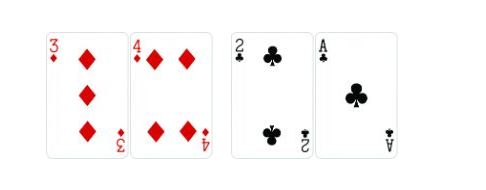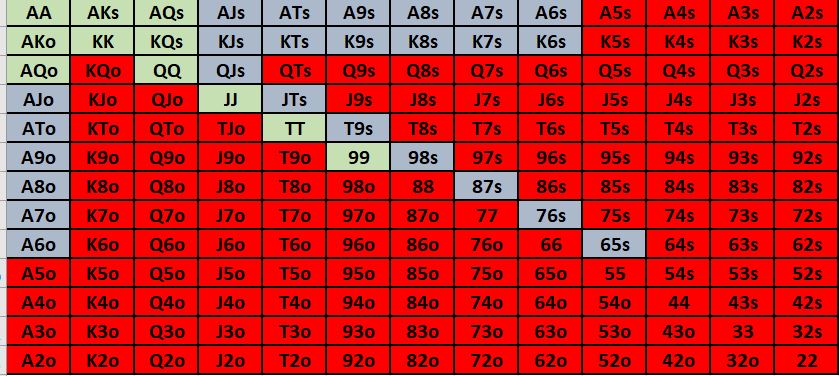The complexity and beauty of No Limit Texas Hold’em is found in deep stack poker games. These are typically cash game formats but can also be found in super slow tournament structures too. Its splendour is due to the fact a player can lose a lot of money in any given hand. Secondly, it’s poker at its best – you and your opponents have more available options.
Every round is a challenge and a mental exercise as you wrestle to decide the best move available. That’s why in this article I’m going to share some deep stack poker strategy that should give you an advantage over low stakes players (NL $100 and below). If you combine the brief overview in this with hard work, you should be able to generate a positive poker win rate.
Don’t get attached to top pair and over-pairs
One of the major leaks found in players who struggle with deep stacks is the top pair overplay syndrome. As stacks deepen, the relative hand strength changes too. In other words, top pair top kicker might seem like the nuts with 20 bbs but at 200 big blinds or more, it’s potentially costly.’
The best deep stack poker players are profiting from inferior opponents who don’t correctly adjust for the deeper stacks. This happens all the time in major live tournaments too where you can see beginners stacking off in the early levels with top pair or over-pairs.
Obviously, you want to extract value in times when your hand appears to be best but there’s a balance between getting value and not going over the top. This is especially true on wet boards that contain potential flushes and straights.
Remember, you don’t have to re-raise with top pair all the time. You can pot control occasionally and adjust your sizing based on board texture too. Finally, you need to be prepared to fold to large river bets if the action suggests your opponent has you beat. The worst thing you can do is continuously pay off large river value bets from nits.
Speculative hands go up in value
The hands that appear as underdog to premium hands go up in value in deep stack games. This is due to the fact you’re not playing match ups like pre-flop all-ins or playing out an all-in pot before you hit the turn. Hands like suited aces and suited connectors have various combinations of flush draws, straight draws, insight draws and disguised two pair and three of a kind.
These hands also go up in value because they’re easier to play. As you’re more likely to have better equity post-flop, you can make more creative players. For instance, you can semi bluff with a draw or float with backdoor potential or call with bottom pair – hoping to improve or make a move later. You can apply pressure and win it now or improve to the better hand.
The possibilities are wider and the value of deception goes up when you’re playing with big stacks. These hands are also easier to play multi-way as many pots are contested with more than one opponent in deep stack play.

Position becomes even more powerful
I expect all of my readers to understand position is vital in poker, otherwise you’ve not read out strategy before or are brand new to poker. But the emphasis on position is amplified even further in deeper stacked formats. Closing the action on every round is a huge advantage that can’t be stressed enough.
Conversely, playing out of position becomes more problematic and trickier. Against tough opposition you can face pressure and difficult decisions for big pots in later rounds. Being under pressure and facing big bets is especially challenging in the deeper games as one mistake can prove very costly. You are generally faced with two decisions; hold on and bluff catch or fold and potentially be bluffed. Neither option is appealing and it shows the trouble you may find yourself in when playing regularly out of position.
The best way to handle this dilemma is to try and be the one playing in position more frequently. Yes, you have to play out of position too but by tightening up against the tougher players from out of position you are one step from protecting profits gained elsewhere. Err on the side of caution in big pots and you will also safeguard yourself from stacking off lightly.
Each position at the table will generate different levels of profit for you. The small blind is the worst as you will always be first to act. The later positions should always be your most profitable so take advantage of this in all forms, (both online and live poker formats).
Quick Tips for Deep Stack Poker Strategy
Now we have the three main tips out of the way, we can focus on some quick wins you can get in low stakes games. Remember to not overuse the plays, utilise them more in position and against weaker opponents and you will reap the rewards.
Wider range for 3 bets
The worst thing you can do in games of 150 bbs or more is to have a predictable range for your 3 bets. Even average poker players will pick up on this and exploit you if you’re only 3 betting jacks or better. To combat this, make yourself harder to play against and create confusion you must throw in some other hands into your 3-betting range. By doing this, you will increase your chances of getting paid later, enhance your table image as a LAG and cause problems to your opponents.
I know this advice seems quite general as you may be asking “what hands do I 3 bet?”, “Who do I 3 bet?”, “Does my 3 bet range change based on position?”. The chart below is a guide to some hands that can work well in 3 bet pots. Factor them into 3 betting opponents who are opening from middle or late position – ideally when you have position and you can expect decent results.
A word of warning though – this deep stack poker strategy tip is for players with experience. If you are a beginner and not accustomed to 3 bet pots or deep stacked games, read our cheat sheet or TAG poker articles first. The blue coded hands are a combination of suited aces, kings, ace rag and suited connectors that you can add to your 3-betting range.

Isolate players heads up
The second quick win for deep stack games is to iso-raise as much as you can. Most table dynamics should afford you opportunities to isolate weaker players. By doing this you will command a good win percentage of pots you contest. You’ll either win it pre-flop without contest or play the pots heads up against an inferior opponent. Both of these are a successful recipe to winning players.
To isolate players effectively, target players who make small raises frequently or like to enter the pot by limping in. They are the perfect players to use exploitative poker strategy against. You will be able to continuation bet with a higher rate of success against them.
Conclusion
As you can see, there are multiple aspects to profitable deep stack poker strategy. This article has touched upon and giving an introduction to the key elements involved. If you have enjoyed this article and are interested in improving your deep stacked play visit some of the relevant pages below for support or book in a free consultation with me to see how we can help you.




